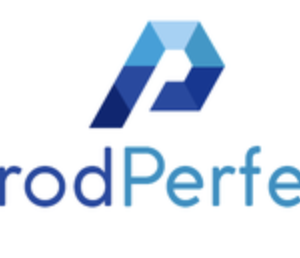Application architectures have shifted toward microservices running in containers, making them more distributed and adding complexity. Those applications need to be monitored differently in organizations doing digital transformation, and because of the evolution of the software technology stack. This whitepaper explains how APM must evolve to become more comprehensive, simpler to implement, become more developer-friendly and more affordable, to address today’s explosion of new applications in production.
To keep pace with customer demands on software functionality as well as time-to-market expectations, software developers must develop efficient, high-quality code faster. Static analysis helps development teams improve quality and comply with coding standards — without sacrificing speed.
Among the advantages of doing static code analysis are:
* It can reduce false positives and false negatives
* Support for automated code review
* It can increase team collaboration
* It can provide reporting and software metrics
Read this whitepaper today to learn how static code analysis can add automation to your testing processes and save you time and money.

The world of software development has changed, and the way we test software has had to change as well. Today, automation is critical, and testing has“shifted left” to be done much earlier in the development process. It can be daunting, but with the right processes and tools in place, your testing practice can not only keep up with development but can also help you release better quality software at this quickened pace.
This showcase is a guide to some of the companies providing testing tools, as each comes at the challenges from a different perspective. We hope you find it useful.
DOWNLOAD THIS GUIDE TODAY!

Digital transformation is driving business success across many markets. To stay competitive, organizations must be able to ideate, build and deploy new application features quickly. Low-code platforms take development work from IT and give it to everyday business users, who know precisely what they and the business need in terms of their applications.

RECORDED EVENT:
In this session, we will present the latest insights leading AppSec and open source security to shift left into early stages, based on research that encompassed a survey of over 650 software developers worldwide. We will also discuss other strategies and tools that can be used to develop both quickly and securely.

Recorded Event:
Application developers want a fast DevOps process. However, database development and DataOps processes follow a different workflow which ends up creating a significant bottleneck in an otherwise streamlined process. But it doesn’t have to be that way. When it comes to data and database code many application development best practices still apply.

People are accessing information and working in many different ways today, causing organizations to build apps that work well not only on desktop machines but also on mobile devices, including progressive web apps. There also are immersive apps, conversational apps, and other types. In the past, organizations writing these different kinds of applications would need different tooling to build them. Today, a new market called multi-experience development platforms looks to tackle this problem for development organizations. This Gartner report looks at the providers in the space today, including pros and cons of each.
Download the report today to learn about this new market.

The bare minimum requirements of low-code solutions are that they enable fast app delivery and are easy to use. With the excitement of being able to quickly and easily build and deliver an application, many companies don’t look beyond those capabilities to see what limits they may run into as they make a decision to adopt a new application development platform. It is often 6 to 9 months after adopting a low-code platform when they start to understand potential critical problems like a rigid architecture, lack of extensibility, inadequate UX for B2C apps, limitations in mobile functionality, outdated web capabilities, weak security, and more. By the time these become obvious it can be hard to change.
To learn the 10 must-have capabilities for using a low-code solution without limits, download this whitepaper today.

The emergence of Value Stream Management (VSM) as a concept applicable to IT signals a change for traditional enterprises in a tech-driven world. Finally, organizations have a digital practice available that is focused on the optimization of business value.
By combining the people, processes, and technologies that map, optimize, visualize and control how value flows across software delivery pipeline, these organizations now have an opportunity to level the digital playing field. At the same time, all this talk of value streams and Value Stream Mapping- also acronymized as VSM- is causing some confusion. While the two “VSMs” are different concepts, they are not mutually exclusive.
This e-book explains:

Developers live to create great applications. Too often in today’s world, though, the overhead of countless meetings, logging in and out of multiple applications, rummaging through emails and chat threads, all take developers away from their passion and — frankly — just wears them down.
But it doesn’t have to be that way.
Read this excellent report from Tasktop that explains how to reduce that non-value-adding work and increase the time your developers can spend building great products.

Most teams experience test automation failure to some extent.
Know that you’re not alone in facing these common problems.
If you’re experiencing issues with your scripts, back end, lab,
or orchestration, the key to overcoming them is through visibility.
You need insight into where the issue is coming from and why it
is happening, as visibility and insights are key to fully understanding
an issue and resolving it.
To learn how insights can help you identify and overcome the challenges to automated testing, download this whitepaper.

Let’s get a better understanding of what codeless test automation is, what tests it can be used for, and how it can help your team.
This eBook breaks down codeless testing into four sections:
-What Is Codeless Test Automation?
-Selenium vs. Codeless Automation: Which is Right for Me?
-Why Codeless Automation is Better in the Cloud
-Five Ways to Get Started with Codeless Selenium

